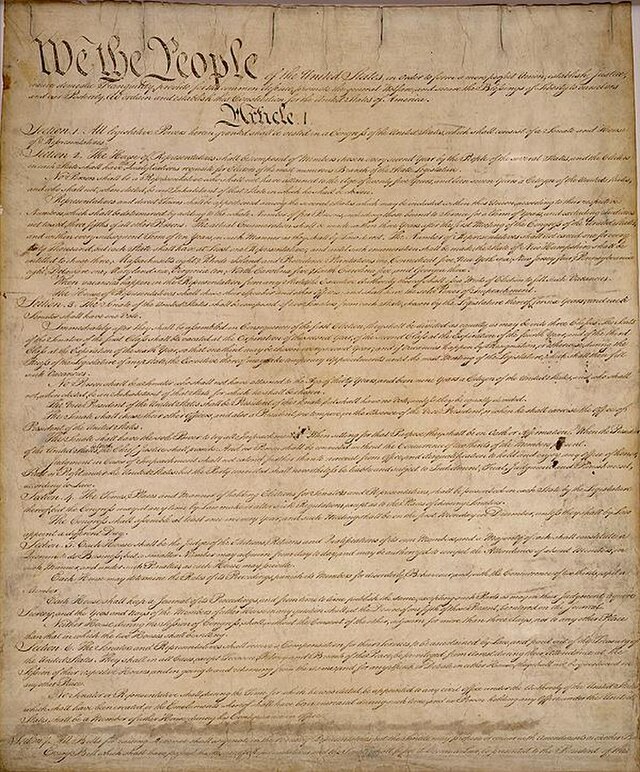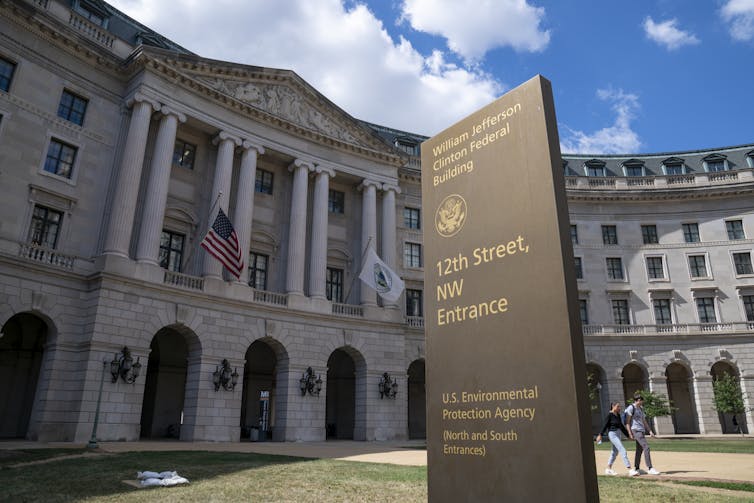
By Morgan Marietta, University of Texas at Arlington
In a 2006 episode of the television show “Boston Legal,” conservative lawyer Denny Crane asserted that he had a constitutional right to carry a concealed firearm: “And the Supreme Court is going to say so, just as soon as they overturn Roe v. Wade.”
That was a joke, an unimaginable event, when the show aired 17 years ago. Then in 2022, the court announced both changes, shifting the butt of a joke to the law of the land in a brief span of years – and signaling the start of what is sometimes called a “constitutional revolution.”
Scholars describe a constitutional revolution as “a historic constitutional course correction,” or a “deep change in constitutional meaning.”
As Constitution Day is celebrated this year on Sept. 17 – the anniversary of the signing of America’s basic law in 1787 – I believe a shift of that magnitude is clearly occurring in the recent rulings of the Supreme Court.
Revolutionary rulings
In the 2021-22 term, the Supreme Court’s dramatic rulings focused on abortion, guns, religion and the power of federal agencies. In a nutshell, the justices removed the recognition of a constitutional right to abortion, expanded gun rights and religious rights, and restricted the power of agencies like the Environmental Protection Agency to craft regulations.
In the recent 2022-2023 term, the court again addressed religion and the power of the federal bureaucracy, also adding race as a major area of controversy in a decision that ended affirmative action in college admissions.
The core rulings on these disputes were all 6-3, with the court’s new supermajority of conservative justices on one side and the three remaining liberals in dissent.
Here are the three major cases from the past term expanding the constitutional revolution:
Race: Students for Fair Admissions v. Harvard College
This case challenged the constitutionality of affirmative action programs at American universities. Unlike previous affirmative action cases, which featured white applicants who claimed to have been discriminated against in favor of minority students, this lawsuit focused on another minority – Asians – who believed they were treated worse than other minorities and whites in the Harvard admissions process.
The heart of the controversy is about the meaning of the equal protection clause of the Fourteenth Amendment: “No State shall … deny to any person within its jurisdiction the equal protection of the laws.”
The court ruled that the equal protection principle means public institutions may not take race into account, even when they are using racial preferences to the advantage of minority groups who suffered a history of oppression.
The Harvard case effectively overrules a prior decision in 2003 that allowed universities to use racial preferences in order to achieve a degree of diversity on campus.
The new constitutional rule is that the equal protection clause is a promise to treat all citizens of all races the same, rather than the alternative understanding of the clause’s promise to move society toward equity among racial groups, which allows or even encourages the differential treatment of some groups in order to make up for past injustices.
Religion: 303 Creative v. Elenis
This case asked whether the First Amendment’s protections of religion and speech override the protections for LGBT citizens in state laws. Does a business owner who wants to provide only wedding websites for celebrations that comport with their religious convictions have to provide the same service for couples whose unions they do not endorse?
The court ruled that regardless of the religious component, it is a violation of free speech for the government to compel the expression of any messages inconsistent with one’s beliefs, even in the context of a business transaction.
While technically a ruling on speech, this is a controversy about religious citizens demanding exemptions from anti-discrimination laws. The ruling is part of a long trend expanding religious liberty.
The new rule in this case extended the previous term’s dramatic change in the constitutional law of religion in the praying coach case, Kennedy v. Bremerton. In that case, the court ruled that the religion clauses at the beginning of the First Amendment have a clear meaning: The government may not coerce any citizen when it comes to religion – either toward or away from religious beliefs. If any action of the government is pushing someone to abandon or embrace religious behavior, that is not allowable.
In the case of the praying coach, this meant a public school could not block his display of prayer at a sporting event, something that would have been seen as an unconstitutional entanglement of government with religion under previous courts. The new interpretation of the First Amendment explained in this line of rulings – giving the benefit of the doubt to religious believers whenever there is a judgment call – dramatically increases the protections for religious citizens.
The administrative state: Biden v. Nebraska
The justices in this case struck down President Joe Biden’s student loan forgiveness program, which would have eliminated up to US$20,000 of debt for millions of Americans, with a total price tag of approximately $430 billion. The decision to bar the administration’s program was grounded in a new principle known as the “major questions doctrine.”
This principle diminishes the power of many federal agencies. It first appeared in the court’s rulings during the pandemic, halting the Biden administration’s eviction moratorium and vaccine mandate. The clearest statement of the doctrine came in 2022 in West Virginia v. EPA, limiting the agency’s ability to introduce new regulations curbing greenhouse gas emissions and shifting energy production toward cleaner sources.
The doctrine asserts that an administrative agency – like the Department of Education, which initiated the loan forgiveness program – cannot decide what the court sees as a major political question, which includes doing something with a large price tag or making a dramatic change in policy, unless the agency has explicit authorization from Congress.
The justification for the new doctrine, expressed most clearly by Justice Neil Gorsuch, is that only Congress wields the authority delegated by the voters, who can reward or punish those members of Congress in the next election. Federal agencies are not limited by the same control through elections, and are wielding the delegated authority of Congress rather than their own inherent power. The major question doctrine argues that if agencies are allowed to make major policy decisions, we do not have representative government as demanded by the Constitution.

Destination unknown
This constitutional revolution could lead far beyond abortion, guns, race, religion or the administrative state. What is known on this Constitution Day is that the revolution will likely continue, expressed in Supreme Court opinions crafted by the new supermajority of conservative justices.
_____![]()
Morgan Marietta, Professor of Political Science, University of Texas at Arlington
This article is republished from The Conversation under a Creative Commons license. Read the original article.


